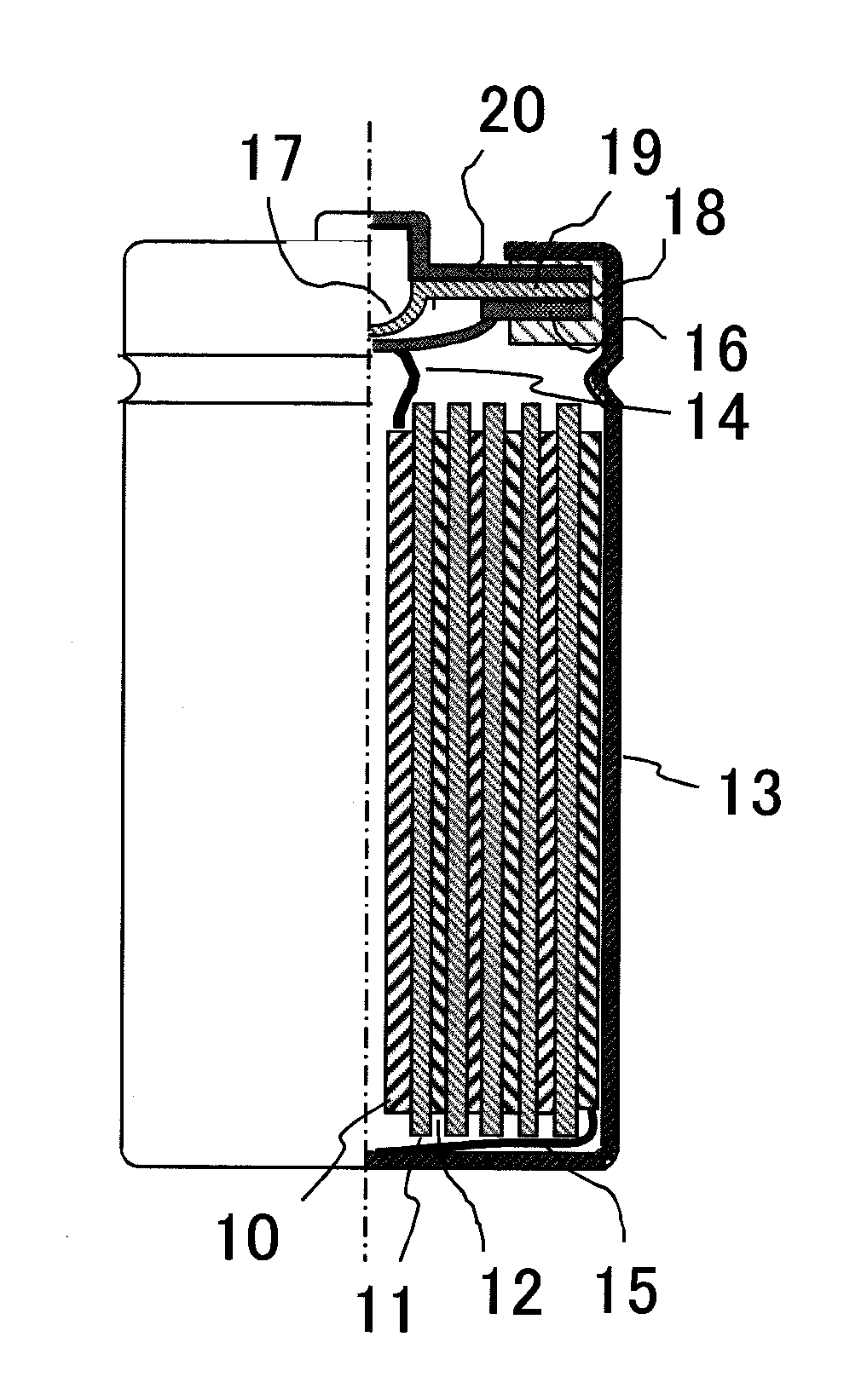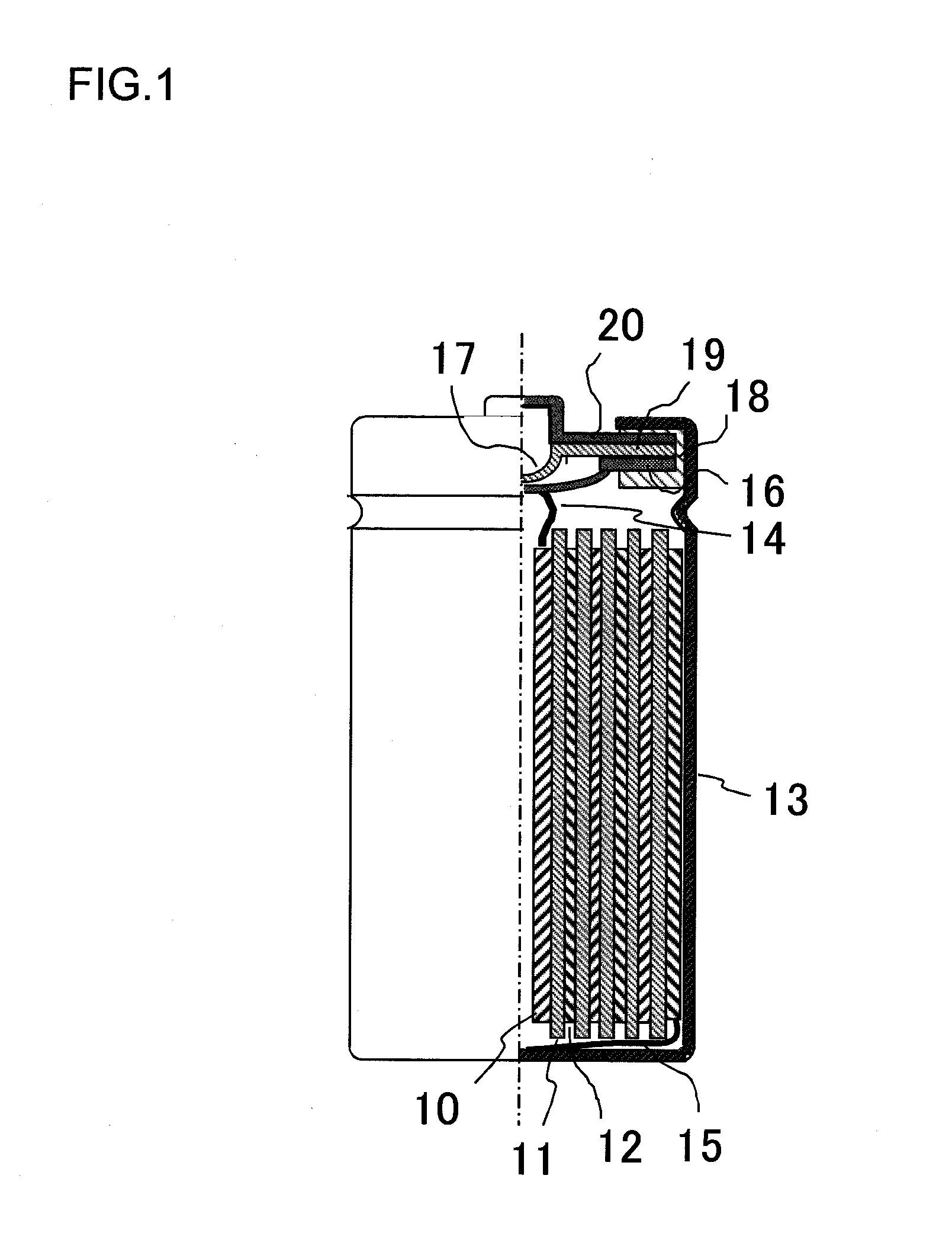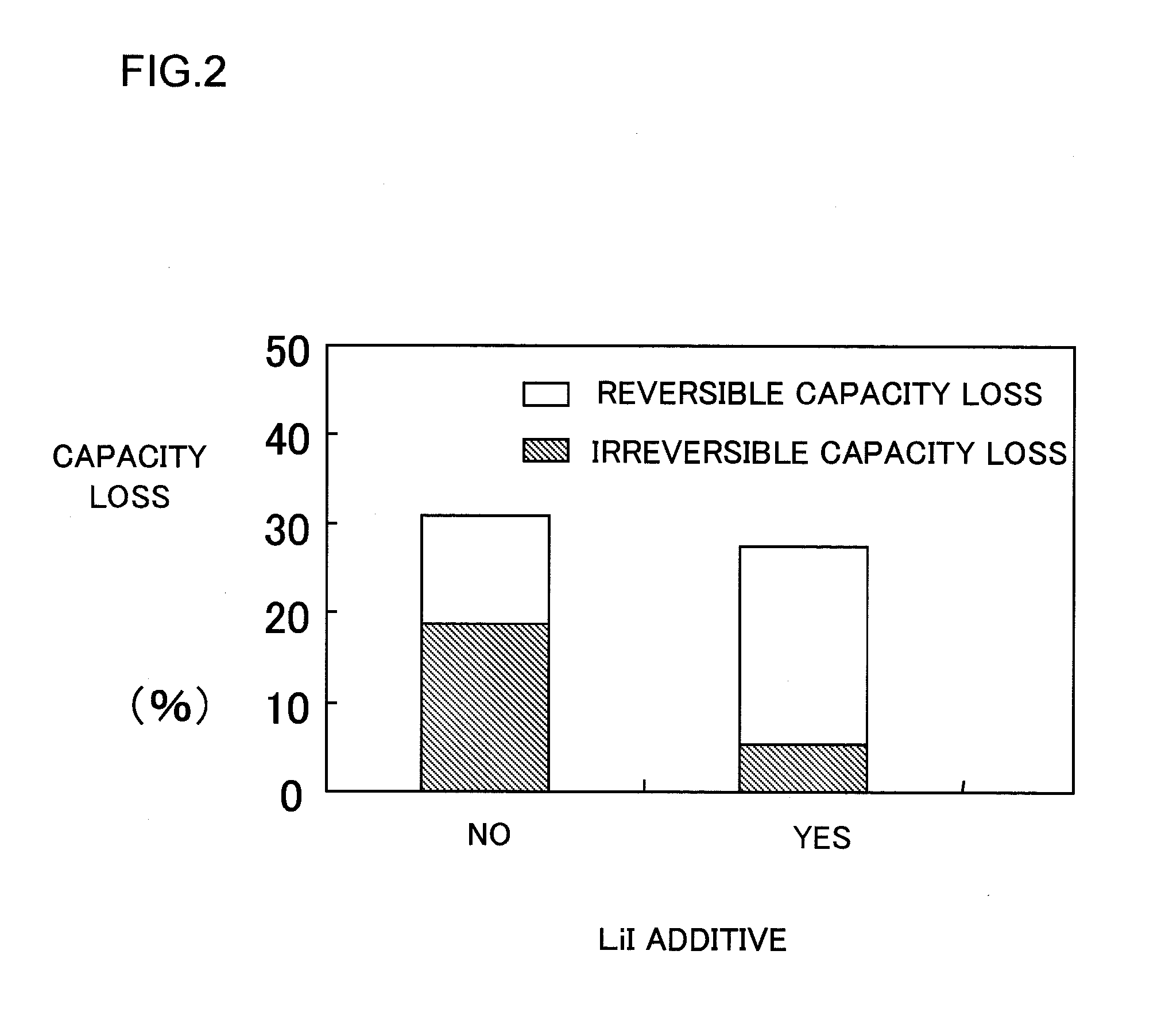Lithium ion secondary battery
a lithium ion secondary battery and lithium ion technology, applied in secondary cell details, non-aqueous electrolyte cells, electrochemical generators, etc., can solve the problems of capacity loss, non-rechargeable capacity loss, rechargeable capacity loss, etc., and achieve the effect of capacity loss
- Summary
- Abstract
- Description
- Claims
- Application Information
AI Technical Summary
Benefits of technology
Problems solved by technology
Method used
Image
Examples
first embodiment
[0110]FIG. 1 shows an inside structure of the lithium ion secondary battery according to the present invention. The lithium ion secondary battery includes a cathode 10, a separator 11, an anode 12, a battery can 13, a cathode collector tab 14, an anode collector tab 15, an inner lid 16, an inner pressure release valve 17, a gasket 18, a positive temperature coefficient (PTC) resistive element 19, and a battery lid 20. The battery lid 20 is an integrated component that includes the inner lid 16, the inner pressure valve 17, the gasket 18, and the PTC resistive element 19.
[0111]The cathode 10 is fabricated by the following procedure. LiMn2O4 is used as a cathode active material. To 85.0 mass parts of the cathode active material are added 7.0 mass parts of graphite powder and 2.0 mass parts of acetylene black as a conducting material. Further, a solution of 6.0 mass parts of polyvinylidene fluoride (hereafter, referred to as “PVDF”) as a binder in 1-methyl-2-pyrrolidone (hereafter refe...
second embodiment
[0120]Further, lithium ion secondary batteries LIB4, LIB5, LIB6, and LIB7 are fabricated using the same battery components such as electrodes as used in LIB1 with different amounts of lithium iodide. The amounts of lithium iodide used in the batteries are as shown in Table 1 above, i.e., 0.01, 0.1, 0.5, and 10 mmol / kg, in this order.
[0121]Next, each battery is charged under the above-mentioned conditions and the tests are completed in a full charge state. The batteries thus obtained are stored as they are in a constant temperature oven at 60° C. and left to stand therein for 20 days. After the standing, tests are started from discharging under the above-mentioned charge-discharge conditions. Subsequently, the charge-discharge cycle is repeated 5 times and discharge capacity at the last cycle is measured and defined as retention capacity (dischargeable capacity after recharging). Table 1 below shows results of the tests.
[0122]There is a tendency that the initial discharge capacity of...
third embodiment
[0124]Lithium ion secondary batteries are fabricated in which the lithium iodide in LIB4, LIB5, LIB6, and LIB7 is replaced by iodine molecule. The amounts of iodine molecule are ½ time the amounts of the lithium iodide shown in Table 1 in molar concentration so that the same amount of the capacity loss suppressor is present in terms of iodine element for each battery.
[0125]As a result, even after lithium iodide is replaced by iodine, LIB4, LIB5, LIB6, and LIB7 corresponding to the respective concentrations exhibit substantially the same values with fluctuations in the range of ±5% with respect to both the initial discharge capacity after standing and the dischargeable capacity after recharging. These results verify that replacement of lithium iodide by iodine can give same results.
PUM
| Property | Measurement | Unit |
|---|---|---|
| temperature | aaaaa | aaaaa |
| oxidation-reduction equilibrium potential | aaaaa | aaaaa |
| weight | aaaaa | aaaaa |
Abstract
Description
Claims
Application Information
 Login to View More
Login to View More - R&D
- Intellectual Property
- Life Sciences
- Materials
- Tech Scout
- Unparalleled Data Quality
- Higher Quality Content
- 60% Fewer Hallucinations
Browse by: Latest US Patents, China's latest patents, Technical Efficacy Thesaurus, Application Domain, Technology Topic, Popular Technical Reports.
© 2025 PatSnap. All rights reserved.Legal|Privacy policy|Modern Slavery Act Transparency Statement|Sitemap|About US| Contact US: help@patsnap.com



